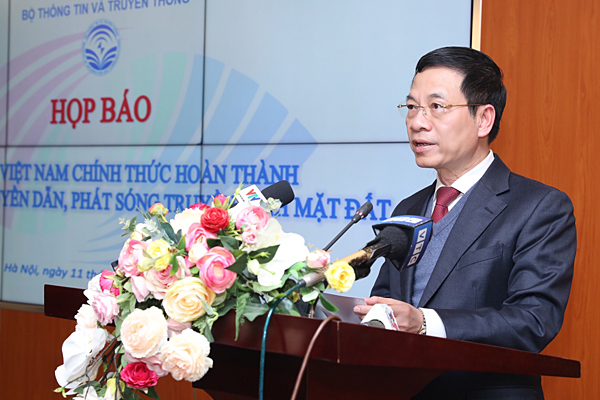
“With the closure of full analog terrestrial television by 2020, Vietnam is ranked 5th out of 10 ASEAN countries, 78/193 countries in the world in terms of resolving television digitization”, said Minister Nguyen Manh Hung in his announcement on January 11, in Hanoi. Earlier, the Ministry of Information and Communication stopped broadcasting analog television, completing the digitization of terrestrial television from 0:00 on 28 December 2020.
The above results, according to Minister Hung, show that Vietnam belongs to the group of developed countries in turning off similar television waves; achieves and goes beyond all the initial goals set by the TV Digitalization Project, with the target of turning off the wave by 2020. ASEAN countries that have completed it before Vietnam include Brunei (2017), Singapore (2019), and Malaysia (2019), Thailand (2020).
The Minister of Information and Communication said that Vietnam faces many difficulties in implementing the above targets, as the country is a country with a large population and complex areas. As of 2011, more than 80% of households do not have digital TV equipment. However, Vietnam has its own way of working.
Closing of analog television was done in four phases with four regional groups from high-income to low-income. Vietnam also directly uses advanced DVB-T2 technology, and is one of the first six countries in the world to use this technology, ignoring DVB-T technology.
In the period of television digitization, in 2014, Vietnam introduced a policy requiring television receivers to integrate DVB-T2 digital receivers. Several domestic enterprises have researched and made “Make in Viet Nam” recipients, covering about 60% of the recipients market. 1.9 million households have received support for receivers in 2015 – 2020. “As a result, the TV receiver market is ready to switch to digital and prices are getting cheaper,” Minister Hung said.
The above measures help Vietnam achieve and exceed many set targets such as digital terrestrial television coverage to reach 80% of the population, compared to 50% of the population in 2011. Digital satellite television covers 100% of the population.
The transition from analog to digital television is an irreversible trend. Thanks to digital television, consumers have more content to watch, and service providers are more economical. Previously, with analog terrestrial television, frequency channels could broadcast only one TV channel, now frequency channels can broadcast about 20 channels of TV programs. The amount of information sent to people has increased many times over. Previously, people could only watch around 4 national television channels and one local channel, now there are more than 15 to 20 channels of information and entertainment, HD quality. Another benefit of digitalization of television is the release of the 700 MHz band. This is considered a “golden strip” for 5G use, thanks to its extensive coverage.

